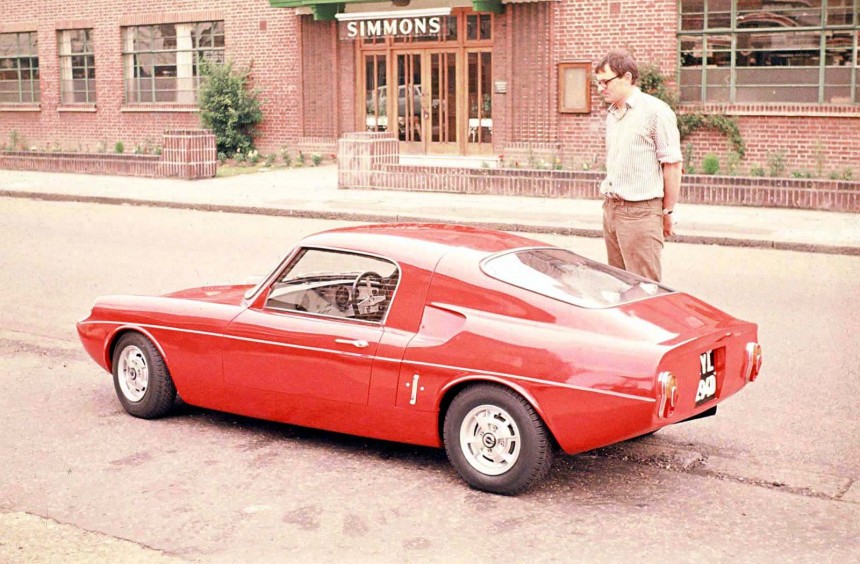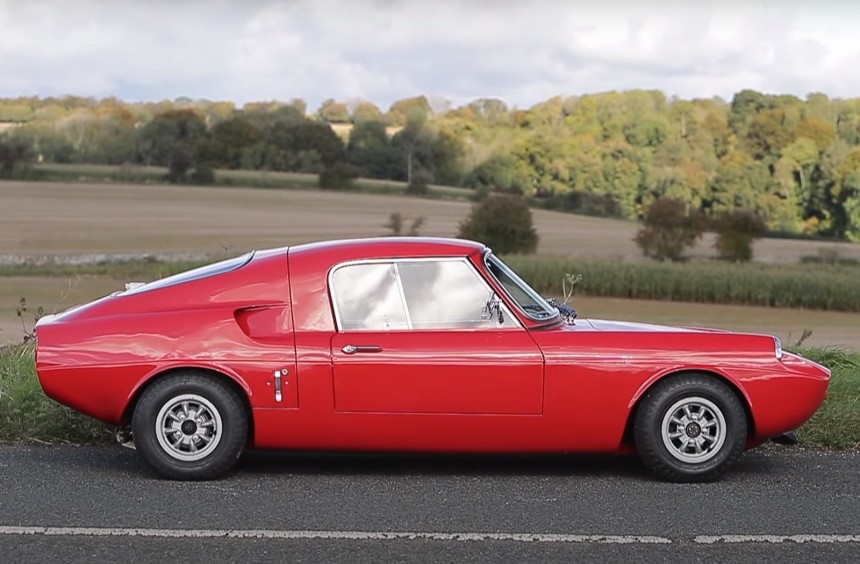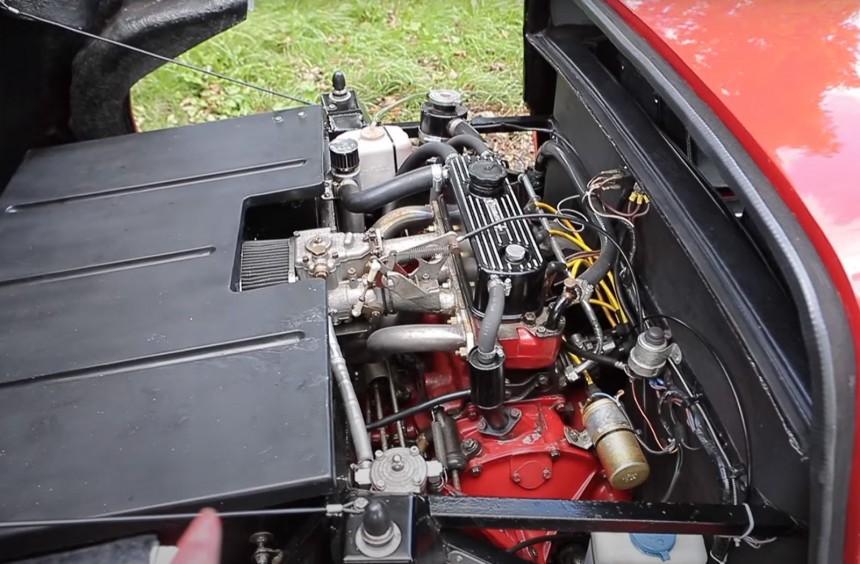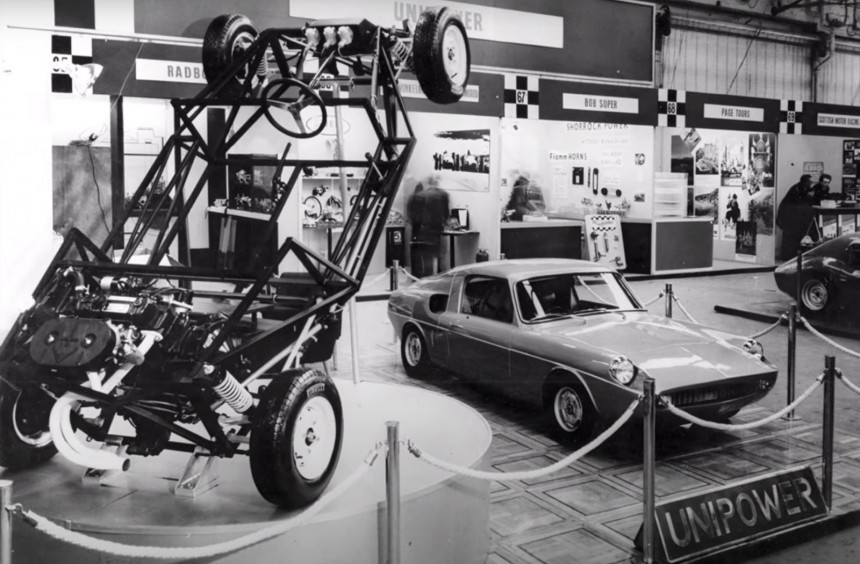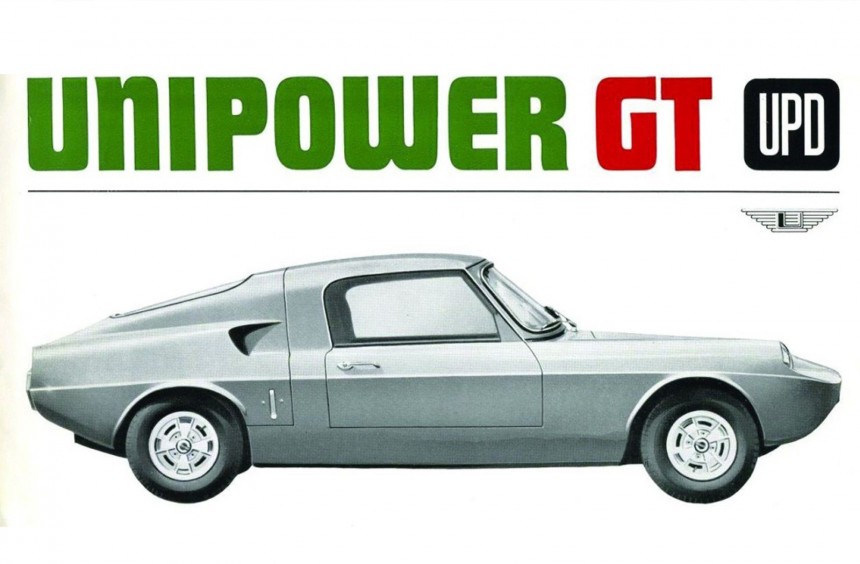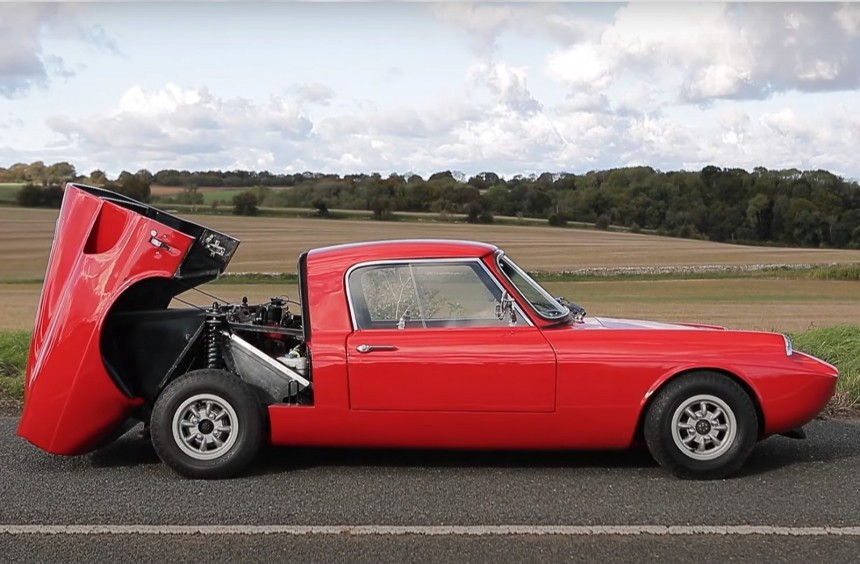Conceived by enthusiasts for enthusiasts, the Unipower GT proved that a small, seemingly underpowered engine and a lightweight chassis could result in a thrilling yet affordable sports car.
I'm sure that most people who read this article have never heard about the Unipower GT. Therefore, it's only fair to ask how can it be a great mid-engine sports car if almost nobody has heard about it.
Well, like many other fantastic rides built by enthusiasts throughout the years, the people behind the Unipower GT lacked the budget, managerial experience, and facilities to develop and advertise it properly.
So, just because this tiny bundle of joy was never famous doesn't mean it wasn't special.
The story of the Unipower GT starts with Ernie Unger, a former Lotus mechanic and race car specialist who wanted to develop an affordable, lightweight mid-engine sports car.
Unger began putting his idea on paper during the late 1950s when lightweight sports car development began to take off in the UK and mainland Europe, but he soon realized he needed help.
In 1963, Unger presented his idea to designer Valerian "Val" Dare-Bryan, whom he met while attending an event held at Goodwood.
Dare-Bryan, who had previously worked for Lotus and also toyed around with the idea of building an affordable sports car, was impressed by Unger's enthusiasm and offered to help develop the chassis.
To design the body, the two enthusiasts then recruited Ron Bradshaw, another talented stylist who, at the time, was working for Ford on the GT40 project.
While Unger and Dare-Bryan were developing the steel tube spaceframe that featured an integrated roll cage and fully independent suspension, Bradshaw designed the bodywork.
The Ford stylist seemed to have took some cues from the first-gen Mustang fastback (as evidenced by the shape of the side windows and rear section) and combined them with a low-slung, aerodynamically efficient front end.
The first bodies were fabricated from aluminum alloy by coachbuilder Robert Peel and Company, under Bradshaw's supervision, and featured taillights, headlights, or indicators taken from existing production cars.
For the heart of the car, the crew of enthusiasts chose the small, affordable, and surprisingly underpowered drivetrain of the BMC Mini.
Displacing 998 cc (60.9 ci), the tiny cast-iron engine with two overhead valves per cylinder and a four-speed manual gearbox fitted inside the sump provided a compact package.
As in the original Mini, it made only 55 hp and 57 lb-ft (77.3 Nm) and was mounted transversely, but since it was placed mid-ship behind the small two-seat cabin, it sent power to the rear wheels.
After the first prototypes were built and tested, yielding promising results, Unger needed the necessary backing to kick off a production run, so he presented the project to close friend and fellow sports car enthusiast Tim Powell.
Powel, who owned Universal Power Drives Ltd (UPD), a company that built trucks and agricultural vehicles under the Unipower brand, was impressed by the little sports car and agreed to help.
The car made its public debut at the London Racing Car Show in January 1966, earning rave reviews from the automotive journalists who got to test it.
It was initially dubbed Hustler GT, but since the name "Hustler" was already used by another UPD vehicle, the car was renamed Unipower GT days before its debut.
Nicknamed "Mini Miura" (after Lamborghini's flagship) by Sport Auto magazine journalist and racing driver José Rosinski, the Unipower GT went into production a few months after its debut.
Unlike the prototypes, the production version featured a fiberglass body bonded to the space frame to increase stiffness and lower production costs.
Measuring 139 inches (3,531 mm) in length, 57.5 inches (1,460 mm) in width, and only 40.5 inches (1,029 mm) tall, it was smaller than a modern Kei car.
But with a mid-mounted engine, a near-flawlessly tuned independent suspension system, and a curb weight of only 1,120 pounds (508 kg), it felt like a bigger, much more powerful sports car.
Apart from the 998 cc Mini engine, the production version was also available with an optional 1,275-cc (77.8 ci) four-pot with a five-speed gearbox from the sportier Mini Cooper S.
Capable of delivering 75 hp and 79 lb-ft (107.1 Nm) of torque, it helped propel the Unipower GT to a top speed of 113 mph (182 kph).
Shortly after the fiberglass production version was unveiled, UPD receivedan overwhelming number of orders.
Priced at £950 ($2,660) or £1,150 ($3,220), depending on the engine choice, it was not as affordable as initially planned, but that didn't stop enthusiasts from the UK, mainland Europe and even the US from placing deposits for one.
Unfortunately, UPD struggled to meet demand, and despite efforts to lower production costs, the car wasn't as profitable as initially planned.
By 1968, Powell's UPD had lost interest in producing the GT after finishing only about 40 units.
Unger partnered with wealthy businessman Piers Weld-Forester, and after purchasing an assembly line from UPD, they formed a new company called UWF to continue producing the GT.
Even if the car was mildly revised, mismanagement of the company led to bankruptcy in late 1969, with only around 30 additional GTs being built.
Despite the troublesome production run cut short by mismanagement, the Unipower GT established itself as one of the best lightweight sports cars of the era - at least in the eyes of those who got to drive it.
Had it been developed even further and advertized correctly, the small mid-engine sports car had all the right ingredients to become an icon.
Sadly, only 75 cars (or 73, according to some sources) were built from 1966 to 1969.
In the following years, the model was overshadowed by other budget-friendly lightweight sports cars like the Lotus Elan and was quickly forgotten.
Today, it is believed that around 40 have survived. One of them is the first fiberglass production car that you can admire in the following YouTube video by Below the Radar Cars.
Well, like many other fantastic rides built by enthusiasts throughout the years, the people behind the Unipower GT lacked the budget, managerial experience, and facilities to develop and advertise it properly.
So, just because this tiny bundle of joy was never famous doesn't mean it wasn't special.
An enthusiast's pursuit to make his dream come true
Unger began putting his idea on paper during the late 1950s when lightweight sports car development began to take off in the UK and mainland Europe, but he soon realized he needed help.
In 1963, Unger presented his idea to designer Valerian "Val" Dare-Bryan, whom he met while attending an event held at Goodwood.
Dare-Bryan, who had previously worked for Lotus and also toyed around with the idea of building an affordable sports car, was impressed by Unger's enthusiasm and offered to help develop the chassis.
A stunning body created by one of the GT40's designers
While Unger and Dare-Bryan were developing the steel tube spaceframe that featured an integrated roll cage and fully independent suspension, Bradshaw designed the bodywork.
The Ford stylist seemed to have took some cues from the first-gen Mustang fastback (as evidenced by the shape of the side windows and rear section) and combined them with a low-slung, aerodynamically efficient front end.
The first bodies were fabricated from aluminum alloy by coachbuilder Robert Peel and Company, under Bradshaw's supervision, and featured taillights, headlights, or indicators taken from existing production cars.
Powered by a surprisingly mundane engine
Displacing 998 cc (60.9 ci), the tiny cast-iron engine with two overhead valves per cylinder and a four-speed manual gearbox fitted inside the sump provided a compact package.
As in the original Mini, it made only 55 hp and 57 lb-ft (77.3 Nm) and was mounted transversely, but since it was placed mid-ship behind the small two-seat cabin, it sent power to the rear wheels.
The move to series production
Powel, who owned Universal Power Drives Ltd (UPD), a company that built trucks and agricultural vehicles under the Unipower brand, was impressed by the little sports car and agreed to help.
The car made its public debut at the London Racing Car Show in January 1966, earning rave reviews from the automotive journalists who got to test it.
It was initially dubbed Hustler GT, but since the name "Hustler" was already used by another UPD vehicle, the car was renamed Unipower GT days before its debut.
The production version
Unlike the prototypes, the production version featured a fiberglass body bonded to the space frame to increase stiffness and lower production costs.
Measuring 139 inches (3,531 mm) in length, 57.5 inches (1,460 mm) in width, and only 40.5 inches (1,029 mm) tall, it was smaller than a modern Kei car.
But with a mid-mounted engine, a near-flawlessly tuned independent suspension system, and a curb weight of only 1,120 pounds (508 kg), it felt like a bigger, much more powerful sports car.
Apart from the 998 cc Mini engine, the production version was also available with an optional 1,275-cc (77.8 ci) four-pot with a five-speed gearbox from the sportier Mini Cooper S.
Capable of delivering 75 hp and 79 lb-ft (107.1 Nm) of torque, it helped propel the Unipower GT to a top speed of 113 mph (182 kph).
A troublesome production run
Priced at £950 ($2,660) or £1,150 ($3,220), depending on the engine choice, it was not as affordable as initially planned, but that didn't stop enthusiasts from the UK, mainland Europe and even the US from placing deposits for one.
Unfortunately, UPD struggled to meet demand, and despite efforts to lower production costs, the car wasn't as profitable as initially planned.
By 1968, Powell's UPD had lost interest in producing the GT after finishing only about 40 units.
Unger partnered with wealthy businessman Piers Weld-Forester, and after purchasing an assembly line from UPD, they formed a new company called UWF to continue producing the GT.
Even if the car was mildly revised, mismanagement of the company led to bankruptcy in late 1969, with only around 30 additional GTs being built.
The Unipower GT today
Had it been developed even further and advertized correctly, the small mid-engine sports car had all the right ingredients to become an icon.
Sadly, only 75 cars (or 73, according to some sources) were built from 1966 to 1969.
In the following years, the model was overshadowed by other budget-friendly lightweight sports cars like the Lotus Elan and was quickly forgotten.
Today, it is believed that around 40 have survived. One of them is the first fiberglass production car that you can admire in the following YouTube video by Below the Radar Cars.













